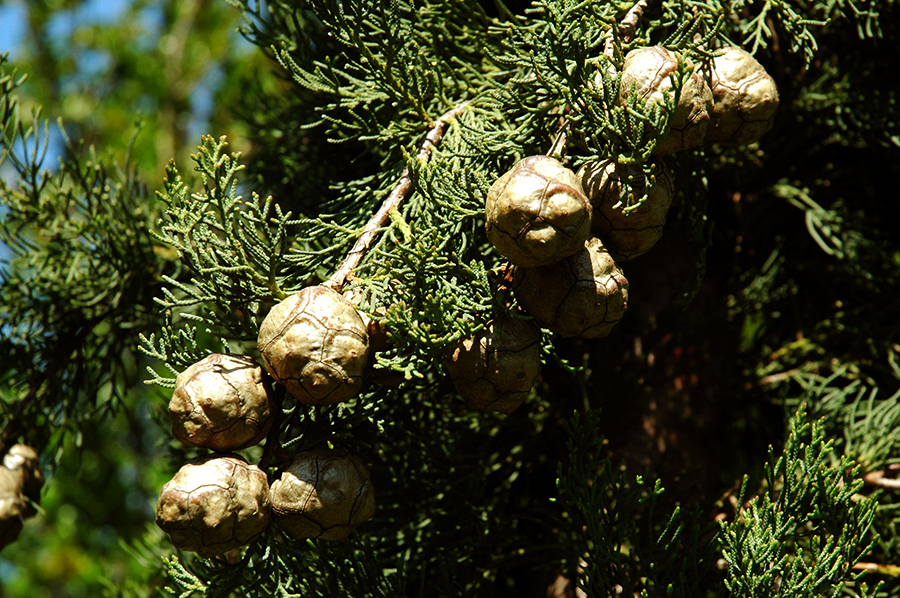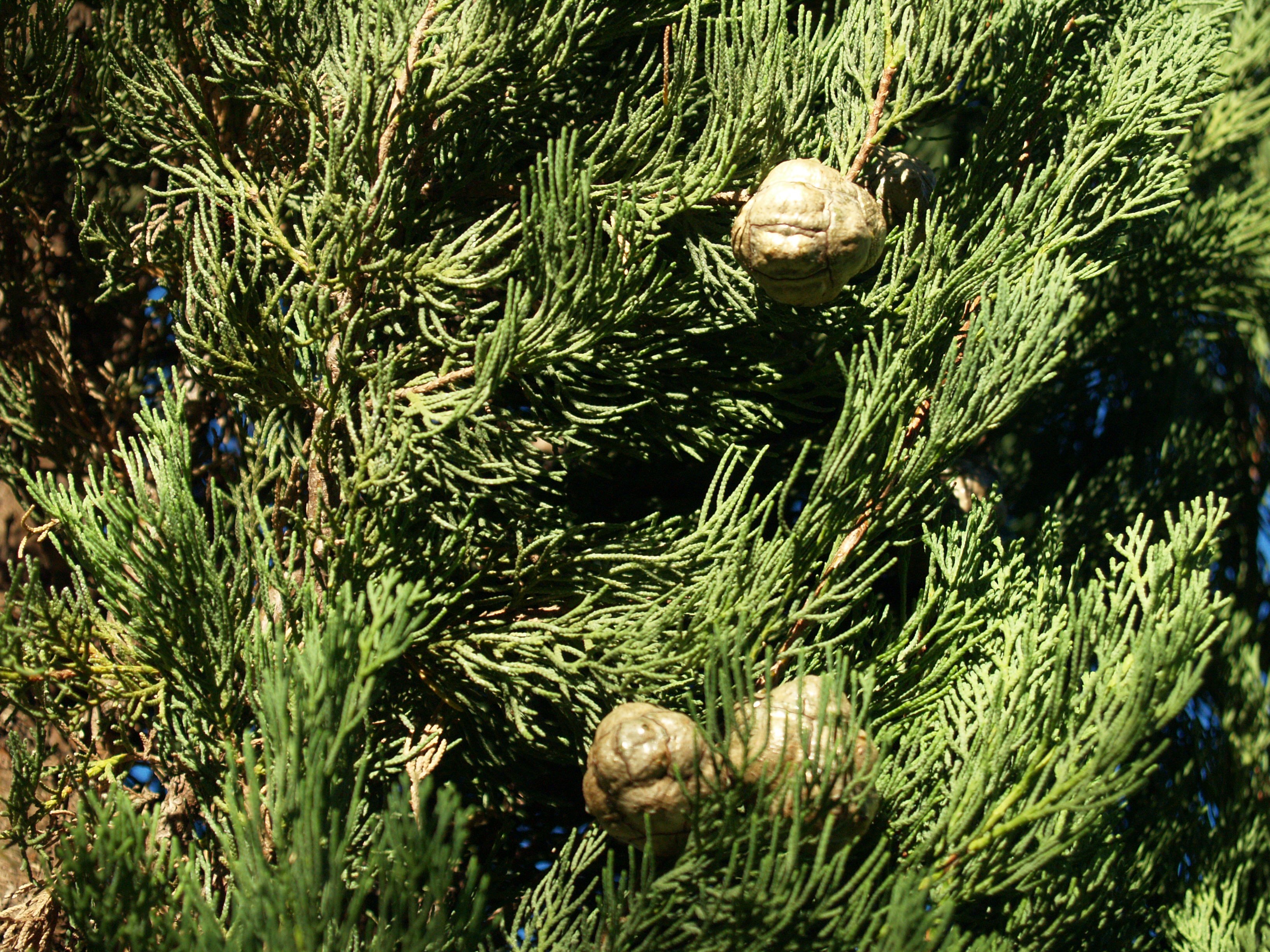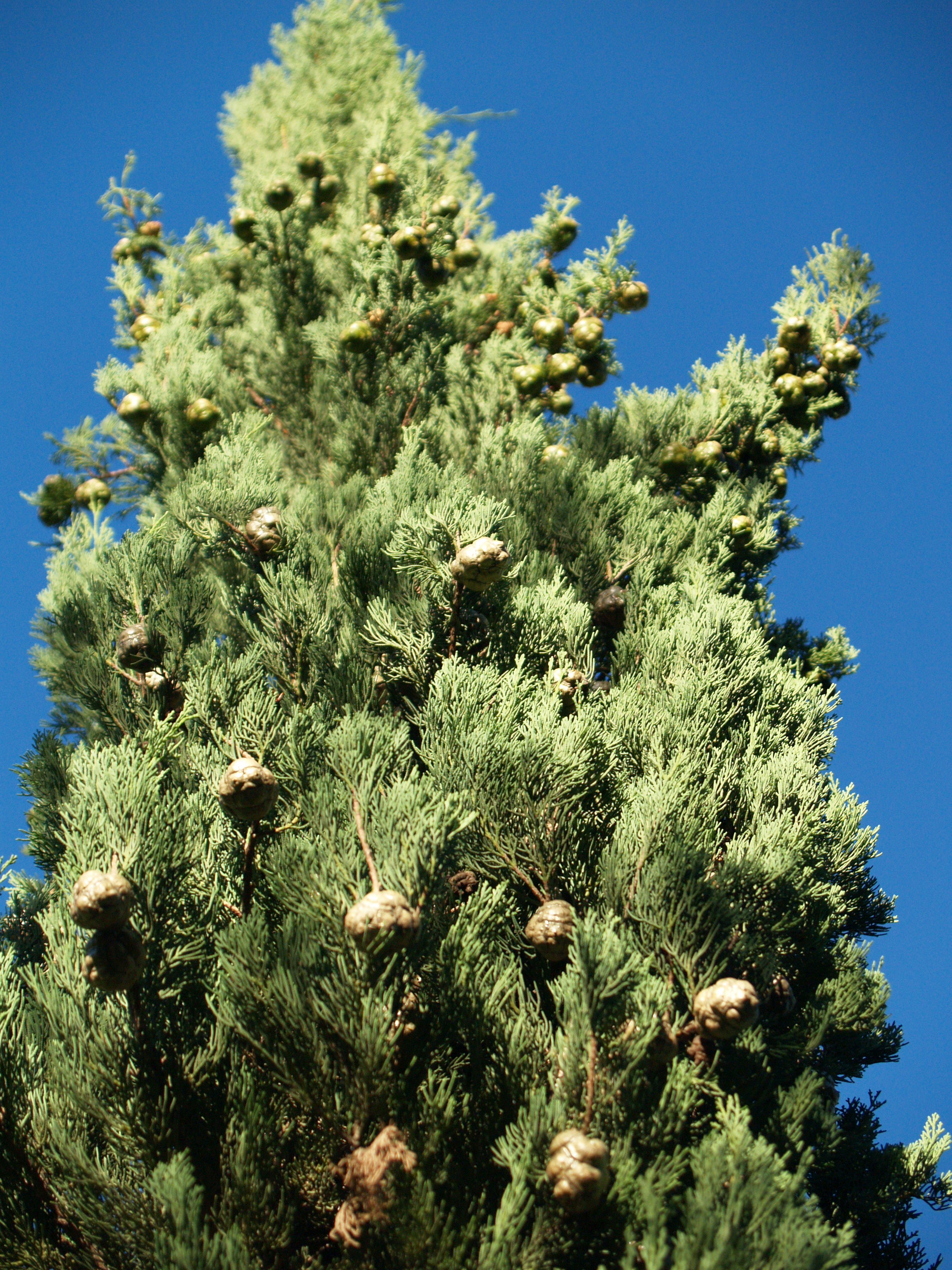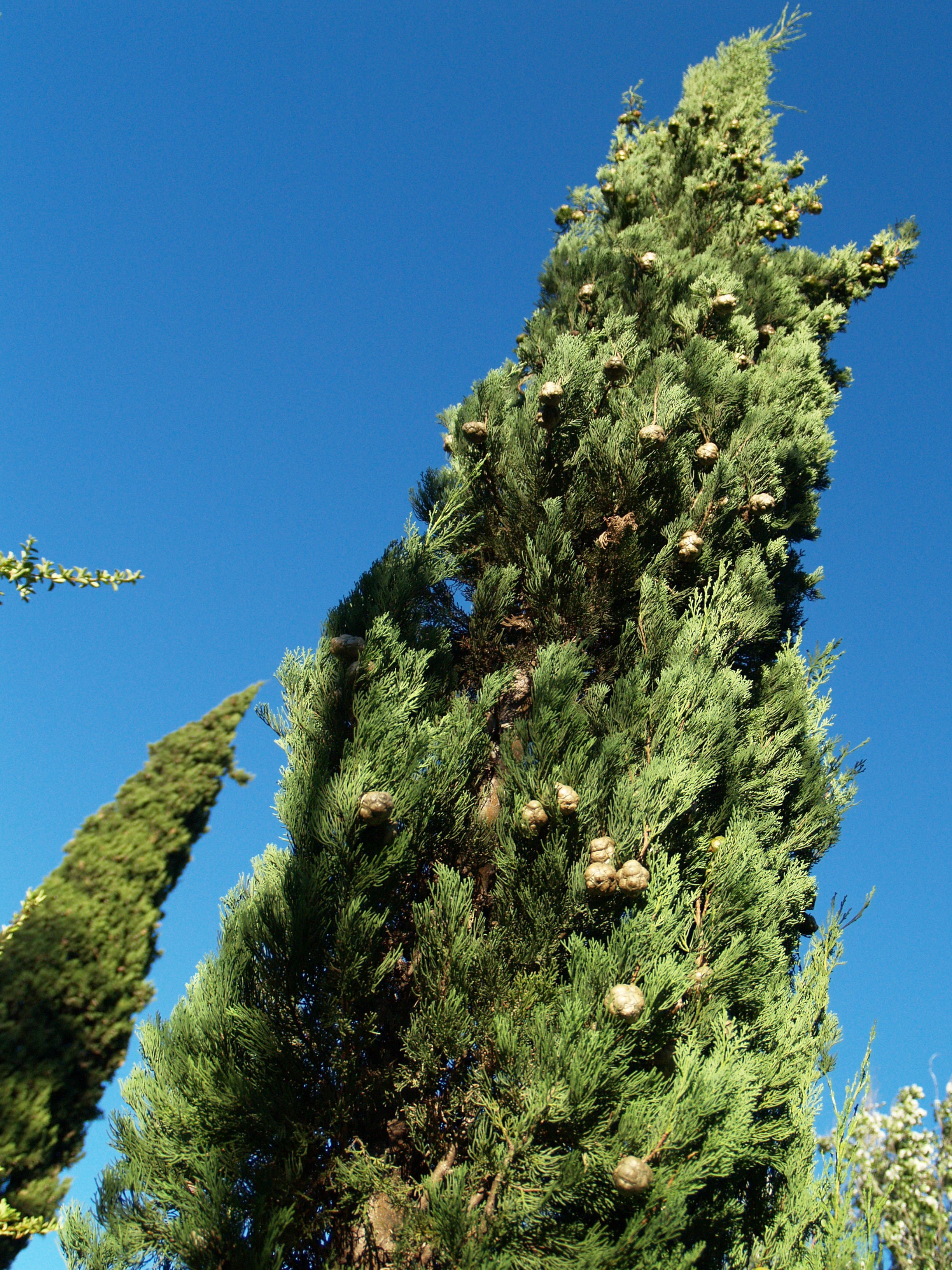
Cypress
Cupressus sempervirens
Family and description
From the Cupressaceae family, Cupressus genus, the Cypress is a coniferous evergreen tree that can grow to be 30 m tall.
This is a very long-lived species, with some trees reported to be over 1000 years old.
It has a conical crown, of intense green. The trunk is grayish brown and finely knotted.
It is a monoecious species, and the cones are green, and have a globose-elliptical shape with 3 to 4 cm long. They become nuts when maturing in the summer. The seeds serve as food for some animals.
Origin and habitat
Native to the eastern Mediterranean region, it has been cultivated since antiquity. It is considered one of the plants that best invokes the Mediterranean landscape.
It is very resistant to drought and extreme temperatures, especially high summer temperatures. It can grow on all types of soils, except in saline or waterlogged soils, requiring good sun exposure and good drainage conditions.
Uses and curiosities
This tree is very resistant to pruning and therefore is often used to make hedges, visual barriers and windbreaks.
Its wood, very fine and aromatic, even when dry, is very much appreciated for furniture, crafts, carving, manufacture of musical instruments, etc. This wood was used to build some Egyptian and Phoenician sarcophagi and,
according to legend, was used in the construction of Noah’s Ark and Solomon’s Temple.
The conical form of this tree is associated to the Christian funerary tradition, but, in reality it has been successively transferred from one culture to another (Syrian, Egyptian, Greek and Roman).
In the Gulbenkian Garden, some specimens can be found in the northeast area, next to the small lake.


